Aspects Behind the Concept of Dimension in Various Fields
Table of Contents
Abstract
It took until the last century for physicists and mathematicians in the Netherlands to question the Euclidean concept of dimension as length, width, and height. Luitzen Egbertus Jan Brouwer published a ground-breaking paper On the Natural Concept of Dimension (Amsterdam, [2]) in 1913 about the mathematical definition of dimension picking up a thought from Poincaré, and Tatjana Ehrenfest-Afanassjewa published a paper The Concept of Dimension and the Analytical Construction of Physical Equations (Leiden, [3]) in 1916 about the physical meaning of dimensions in which she approached the problem by logical methods. Brouwer worked in the new field of topology, and Ehrenfest-Afanassjewa in statistical mechanics and for Klein’s Encyclopedia of Mathematical Sciences (1898-1935). This article is meant to summarize the many aspects behind the concept of dimension in various fields.
Dimensions in Mathematics, Physics, and Everyday Life
The term dimension is widely used and its meaning ranges from ordinary size to complicated topological statements. What hasn’t changed since Euclid and what is still common to all versions are degrees of freedom and a chain of inclusions. We have up to three degrees of freedom in classical geometry
$$
\{\text{Length}\}\subsetneq \{\text{Length and Width}\}\subsetneq \{\text{Length and Width and Height}\}
$$
and this was sufficient to know for literally centuries until Peano (1890, [5]) presented a curve that could paint a square. Cantor (1878, [4]) had already proven that there is a one-to-one function from ##\mathbb{R}## to ##\mathbb{R}^2##. Line and square were all of a sudden no longer mathematically distinguishable.
Fortunately, there is physics. Dimensions in physics are time, length, mass, current, and to cover the borders, too, temperature, amount of substance, and luminous intensity. Everything else is products and quotients of these; Ehrenfest-Afanassjewa even set it on logical ground. This is what engineers work with till today, and dimensional analysis is an important tool as the first check of any physical calculation. However, Oberdorfer [6] observed 1956
“Although the concept of dimension is sufficient for all practical cases and represents an extremely valuable means of briefly describing quantities and checking the equations of quantities, there are also cases where it fails – at least from a theoretical point of view. The most frequently cited and best-known example of this is the dimensional equality of torque and work. Hardly anyone would equate the two quantities or somehow arrive at an equation in which they both appear as summands, but this undoubtedly introduces a certain flaw in dimensional calculus. It is still true that quantities of the same type must have the same dimensions, but this theorem cannot be reversed. Quantities of the same dimension do not necessarily have to be of the same type.”
Are we at least safe in everyday life? We can live with the Euclidean view when we renovate our homes, shop not quite accurate masses, and make appointments by time, and we call every string
$$
(s_1,s_2,\ldots,s_n)
$$
of size ##n## of dimension ##n.## And I bet we do not always think about whether these are strictly degrees of freedom or dependent parameters. But we live in the digital revolution and those strings become data, data are gathered in data warehouses and clouds. They are analyzed, organized, and traded. And then we find:
“The term Slowly Changing Dimensions refers to methods in data warehousing for recording changes in dimension tables and, if necessary, documenting them historically. Essentially, three methods are divided into types according to Kimball. They all have in common that existing data records are linked to new data records via the primary key to save changes in the table.” [7]
Even those strings and their dimension become scientific objects and are no longer just a collection of numbers. The concept of dimension is not trivial!
Historical Notes
Brouwer was the first one to bring order into the matter. He introduced the terms homotopy, simplicial approximation, and the degree of continuous mapping. Peano’s curves were not bijective and Cantor’s mappings were not continuous. This loophole allowed Brouwer to prove his theorem about the invariance of dimensions of Euclidean spaces [8].
If there is a homeomorphism between an ##n##-dimensional and an ##m##-dimensional simplex, then ##n=m.##
The content of the concept of dimension was not exhausted by this theorem. Lebesgue had indeed defined dimension [9] when he observed that if an ##n##-dimensional space is covered by sets of sufficiently small diameter, there must be points that belong to at least ##n+1## sets of the covering. However, he did not give satisfactory proof of this, which led to a polemic with Brouwer [1]. In the end, we have – among other dimension concepts in topology – Lebesgue’s covering dimension [10]. Brouwer resumed his previous ideas outlined by Poincaré. This resulted – with contributions by Urysohn, Čech, Menger, and others – in a definition that applies to all regular Hausdorff spaces [12]. Let ##X## be a regular Hausdorff space with open sets ##\mathcal{T}.## The Menger-Urysohn dimension is defined as ##\dim(\emptyset,\emptyset) = -1## and
$$
\dim(X,\mathcal{T})=\min_{n\in \mathbb{N}}\left\{
\underset{x\in X}{\forall}\;
\underset{x\in U\in \mathcal{T}}{\forall}\;
\underset{V\in \mathcal{T}}{\exists} \;x\in V\wedge \overline{V}\subseteq U\wedge \dim(\partial V,\left.\mathcal{T}\right|_{\partial V})<n
\right\}
$$
This may look a bit complicated, but at least we can show ##\dim(\mathbb{R}^n,\|\,.\,\|)=n.## For further historical considerations and controversies see [11],[13],[14]. The difficulties that arise particularly in topology are due to the need for a topological invariant. These invariants, however, depend often on the kind of topology.
Vector Spaces
The situation in linear algebra should be unambiguous. We all speak about the dimensions of vector spaces without hesitation and often more than once a day. But let’s have a closer look. First of all: matrices or vectors don’t have a dimension, they have coordinates. They are both points in a vector space and points are zero-dimensional objects. We could likewise interpret them as mappings, which makes them tensors. Tensors don’t have a dimension either, they have degrees and coordinates. Speaking of the dimension of a vector is a convenient way to mention the dimension of the vector space that hosts the vector – or in the case of a matrix – mention the dimensions of the vector spaces the corresponding linear transformation is mapping from and to. It is a mash-up between degrees of freedom and size. But a vector has no free parameters, it has dimensionally many components/coefficients / coordinates, i.e. numbers.
Secondly, a vector space ##V## always has a scalar field ##\mathbb{F}## and since it decides about the dimension, we should better write ##\dim_\mathbb{F}V,## e.g.
$$
\dim_\mathbb{Q}\mathbb{C}^n=\infty \, , \,\dim_\mathbb{R}\mathbb{C}^n=2n\, , \,\dim_\mathbb{C}\mathbb{C}^n=n.
$$
##\pi## and ##e## are linearly independent over ##\mathbb{Q}## but we have a non-trivial linear combination of the zero vector ##(-1)\cdot \pi + \dfrac{\pi}{e}\cdot e=0## over ##\mathbb{R}.## We usually know the scalar field and it is not necessary to mention it, however, not always. If we look at the simple three-dimensional Lie algebras that physicists use in quantum field theory then we have
$$
\mathfrak{su}(2) \cong_\mathbb{C} \mathfrak{sl}(2) \;\;\text{ and }\;\; \mathfrak{su}(2)\not\cong_\mathbb{R} \mathfrak{sl}(2).
$$
The scalar field matters. Physicists tend to speak of generators if they mean vectors of a Lie algebra, often basis vectors. This has historical reasons. It reflects the picture of a topological manifold, a Lie group, and flows through a vector field on that Lie group, the corresponding Lie algebra as its tangent field. Unfortunately, they speak about generators of the Lie group even though tangent vectors (infinitesimal generators of these flows) are meant to be Lie algebra elements. Lie groups usually no vector spaces.
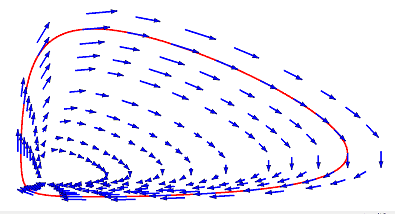
Nevertheless, the dimension of a topological Lie group is defined as the dimension of its tangent space, its Lie algebra. This adds in a way another topological dimension to the list.
The dimension of vector spaces is defined as the maximal number of ##\mathbb{F}##-linear independent vectors. Note that we needed a minimum for the Menger-Urysohn dimension and a maximum in linear algebra. Every vector space has a basis and therefore a dimension. But what if this number isn’t finite anymore? Not only that we need the axiom of choice to prove this and need cardinalities instead of numbers, but also uniqueness becomes a problem. Let’s consider the Hilbert space ##\mathcal{H}## of square-integrable functions on ##[0,1].## It has an inner product
$$
\bigl\langle f,g \bigr\rangle =\int_0^1 f(x)g(x)\,dx
$$
which becomes the essential property in a moment, and is a real vector space. First, we consider the Hamel bases of infinite-dimensional vector spaces in general. A Hamel basis ##\mathcal{B}## of a vector space ##\mathcal{V}## is simply a linear independent generator system of a vector space. Generating here is not the one physicists use. Here it means that every vector can uniquely be written as
$$
v =\sum_{b\in \mathcal{B}}\lambda_b \cdot b \quad , \quad\lambda_b=_{a.e.}0
$$
where a.e. stands for almost everywhere meaning except for finitely many cases. We can write each ##v\in \mathcal{V}## as a finite linear combination with vectors from the possibly infinite Hamel basis ##\mathcal{B}##.
Now we have all our requisites to perform a magic trick. ##\mathcal{H}## is certainly uncountably infinite and has uncountably infinite many linear independent functions. Hence
$$
\dim\mathcal{H} > \aleph_0.
$$
On the other hand, we have an inner product that allows us to use the Gram-Schmidt algorithm to find an orthonormal basis in ##\mathcal{H}.## Admitted, the process will never stop, but it adds basis vector by basis vector by basis vector by basis vector … so
$$
\dim\mathcal{H} =\aleph_0.
$$
These are the kinds of problems that arise by dealing with infinity. The first is the Hamel dimension, and the second is the Hilbert space dimension. And Hilbert spaces wouldn’t be topological vector spaces if things were easy and simple. A basis of a Banach space ##\mathcal{S}##, and the example ##\mathcal{H}## is a Banach space, is called a Schauder basis ##(f_n)_{n\in \mathbb{N}}\subseteq \mathcal{S}##, if every ##f\in \mathcal{S}## can be written as a convergent series
$$
f =\sum_{n=1}^\infty \lambda_n \cdot f_n
$$
This definition allows infinitely many coefficients unequal zero and requires convergence according to the norm of the Banach space instead. The terminology around Hilbert spaces and their bases isn’t exhausted, yet. We have coefficient spaces, Bessel systems, Riesz systems, and frames [15]. Linearity becomes topological if we deal with infinities since counting isn’t sufficient any longer, and linear algebra becomes functional analysis.
Algebraic Dimensions
The chains I mentioned at the beginning might have become a little bit invisible in the considerations about history and linear algebra. They are now at the center of the concepts of dimensions in abstract algebra, a field that evolved almost parallel to its neighbor topology – Diophantic equations aside. The main contributions from Steinitz, Galois, Artin, Noether, Zariski, Hilbert, van der Waerden, Grothendiek, and not forget Andrew Wiles, are nearly all from the last century.
Steinitz published a paper in 1910 Algebraische Theorie der Körper [16] about fields which van der Waerden called “a turning point in the history of algebra in the 20th century and it was the first time that a particular structure (field) was generally investigated axiomatically.” and Bourbaki said it “can be considered the origin of today’s conception of algebra.” [18] Dieudonné agrees with this view [1]: “He [Steinitz] established properties like separability, algebraic closure and proved their existence, transcendental basis, incomplete fields, etc. The number of elements of a transcendental basis does not depend on the ground field and defines thus an invariant dimension of irreducible manifolds ##Y\subseteq \mathbb{C}^n.##” Irreducibility in this context means mostly connected. Nevertheless, it is a topological term and we need to talk about topology once more. A few years ago in 1893, Hilbert published his Nullstellensatz [17]. It was the beginning of algebraic geometry. He connected algebraic objects (ideals ##I(Y)##) with geometric objects (algebraic varieties ##Y##), i.e. the set of zeros of multivariate, complex polynomials of these ideals. His theorem reads in a modern version
$$
A \triangleleft \mathbb{C}[X_1,\ldots,X_n] \Longrightarrow \sqrt{A}=I(V(A))
$$
and means that all multivariate complex polynomials of the proper ideal ##A## in the polynomial ring ##\mathbb{C}[X_1,\ldots,X_n]## have a common zero ##(x_1,\ldots,x_n)\in \mathbb{C}^n.## The ring-homomorphic image
$$
\mathbb{C}[X_1,\ldots,X_n]/I(Y)=\mathbb{C}[x_1,\ldots,x_n]
$$
is called the coordinate ring of ##Y.## It can be considered for any field, e.g. with ##Y\subseteq \mathbb{R}^3## as a saddle whose equation ##z-xy=0## defines the polynomial ##f(x,y,z)=z-xy\in I(Y).## Since we are talking about zeros, it is convenient to assume their existence and consider algebraically closed fields. A particular algebraic topology is the Zariski-topology. Its open sets are the non-zeros of polynomials
$$
D(f)=\{x\in \mathbb{C}^n\,|\,f(x)\neq 0\}\, , \,f\in \mathbb{C}[X_1,\ldots,X_n]
$$
and its closed sets are the sets of zeros. This topology isn’t Hausdorff. The requirement of irreducibility is a bit stronger than connectedness. The Krull dimension of an algebraic variety ##Y## is the supremum of all chains
$$
Y_0 \subsetneq Y_1 \subsetneq \ldots \subsetneq Y_n
$$
of non-empty, closed, and irreducible subsets of ##Y.## The object of interest in rings ##R## is their spectrum ##\operatorname{Spec} (R)##, the set of all prime ideals. The maximal length of chains of prime ideals
$$
P_0 \subsetneq P_1 \subsetneq \ldots \subsetneq P_n = P
$$
is called height of ##P## and the supremum over all heights of prime ideals in ##\operatorname{Spec}(R)## is the Krull dimension of ##R.##
The Krull dimension of ##Y## is the same as the Krull dimension of its coordinate ring, which is the transcendental degree of
$$
\left[\mathbb{C}(x_1,\ldots,x_n) : \mathbb{C}\right]
$$
which brings us back to Steinitz and why his work is widely considered the birth of modern algebra. An integral domain is zero-dimensional if and only if it is a field [19] so we get another dimension of the complex numbers
$$
\dim \mathbb{C} = 0.
$$
The Krull dimension can be extended to ##R##-modules ##M## by
$$
\dim M = \dim (R/\{r\in R\,|\,r\cdot m=0 \text{ for all }m\in M\}).
$$
The similarity between the concept of dimension of a module and the concept of dimension of a vector space is only linguistic: As a module, every vector space has dimension zero, since a field ##R## has Krull dimension zero.
Other algebraic concepts that consider chains are called height, length, degree, or order: Artinian rings, Noetherian rings, solvable groups or algebras, nilpotent groups or algebras. The chain lengths there could be regarded as a dimension in a way, however, they don’t carry it as an attribute.
More Mathematical Dimensions
We already mentioned Lebesgue’s covering dimension ##n## as the smallest number, such that every finite open covering allows a refinement so that each point is contained in at most ##n+1## sets of this refinement [10]. An alternative was the Menger-Urysohn dimension which is also called the small inductive dimension. In the definition of the large inductive dimension, we replace the condition for any point with the same condition for any closed set.
Riemannian manifolds are characterized by their Euclidean atlases. Their dimension is the maximal dimension of its charts. A similar has been tried in topology, namely exhausting a topological space by so-called simplices. These are roughly classical, angular geometric objects, line segments, areas, cubes, higher-dimensional parallelepipeds, etc. The set of all simplices is a simplicial complex [20].
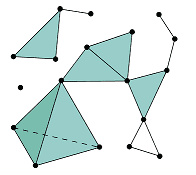
This was the beginning of algebraic topology which for instance includes the Weyl chambers in the theory of simple Lie groups. The dimension of a simplicial complex is the maximal dimension of its simplices, three in the example of the image, one less than the maximal number of vertices of its single simplices.
Topology also deals with genera. The genus of a compact orientable surface is the number of its holes or the number of its handles. It is responsible for the famous comparison of a mug with the topologically equivalent doughnut. It is a topological invariant that is easier to handle than the topological dimensions.
Even orders have a dimension [21], the Dushnik–Miller-Dimension named after their theorem
Every partial order is the intersection of linear orders.
The power set ##\mathcal{P}(S)## of a non-empty set ##S## with the inclusion order has the order dimension
$$
\operatorname{dim_o}(\mathcal{P}(S),\,\subseteq \,) =|S|.
$$
If ##n\in \mathbb{N}## with exactly ##\omega(n)## many distinct prime factors, and the order is divisibility on the set ##T(n)## of divisors of ##n##, then
$$
\operatorname{dim_o}(T(n),\,|\,)=\omega(n).
$$
“The asymptotic dimension theory was founded by M. Gromov [22] in the early 90s” [23]. Gromov considered finitely generated groups ##G## and defined a metric
$$
d(x,y)=\min\{n\,|\,x^{-1}y=g_1\cdots g_n\}
$$
where ##\{g_j\,|\,j\in J\}## are the generators of the group. He defined the asymptotic dimension as
$$
\operatorname{dim_\infty }(G)=\lim_{n \to \infty}(G, d(\,.,.)/n).
$$
Fractal Dimensions
Benoît Mandelbrot coined the term fractal in 1975 [34] by which he described geometrical objects that are defined by self-similarity. The concept covers a broad range of objects like the Sierpinski triangle or the Mandelbrot set (German: little apple man) [27],[28].

They are closely related to Julia sets, introduced by G.M. Julia and P. Fatou. Julia sets are subsets of the complex number plane built by
$$
z_{n+1}=f(z_n) \;\text{ and }\; f(z)=z-\dfrac{p(z)}{p'(z)} \;\text{ and }p\;\in C^1(\mathbb{C}).
$$

The definition can be extended to quaternions. This is a real four-dimensional space and a complete representation of Julia sets is problematic. However, it is possible to visualize the intersection of such a Julia set with a three-dimensional hyperplane (see image).
Fractals and Julia sets can be found in nature, e.g. in the skeletons of radiolaria, wood ferns (Dryopteris), and romanesco (cauliflower), as well as in chaos theory. nLab summarizes the idea of a dimension for fractals: “… measures how the amount of detail of a given space changes with scale. For ordinary manifolds this fractal dimension coincides with the usual dimension, taking values in the natural numbers. For fractal spaces, however, the fractal dimension may be a non-negative rational number, in fact, a real number, hence a fraction, whence the name fractal.” [24]. They link to Wikipedia [26] whose German version [25] offers explicitly five different definitions of a fractal dimension:
- box-counting dimension
- Minkowski dimension
- self-similarity dimension
- Rényi dimension or information dimension
- Hausdorff dimension or Hausdorff-Besicovitch dimension
They have in common that they try to measure
$$\dim F =\dfrac{\log(\text{number of self-similar parts})}{\log(\text{reduction factor})}\;.
$$
The Mandelbrot set is (fractal) two-dimensional. Its border has an infinite length and its Hausdorff dimension and box-counting dimension are also two – another surprise of a topological dimension whose space and its border have the same dimension. The Cantor set ##\mathcal{C}## has a self-similarity dimension that is not an integer value
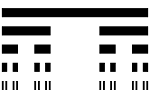
$$
\dim_s \mathcal{C} = \dfrac{\log 2}{\log 3}\approx 0.63093\;.
$$
Dimensions in Theoretical Physics

Of course, theoretical physics knows the seven basic dimensions time, length, mass, etc. that I mentioned at the beginning. Especially since time is everywhere. However, we know from Einstein that time is frame-dependent and absolute time does not exist. Frames are coordinate systems and they are not globally valid. It is a bit like Euclid’s parallels, which do not intersect, but when we stand on a railway track it seems they intersect somewhere in the distance. On the other hand, when we look around, we see a perfectly parallel track. We can bundle flat charts of reality into an atlas to describe local situations. We only need the Mercator projection if we want to make a chart of the entire Earth, but this isn’t a smooth process any longer, it has cuts.
We do something similar in mathematics and physics when we consider curved objects and topological manifolds. We consider smooth local charts. The new concept of dimension is the number of basic dimensions that are necessary for a chart, the number of coordinates – now local.
Lie groups, a central object in theoretical physics since Noether (1918) are topological manifolds. They are at the center of the standard model
$$
S\quad=\quad \underbrace{\overbrace{\operatorname{U}(1)}^{\dim 1}\quad \times \quad \overbrace{\operatorname{SU}(2)}^{\dim 3}}_{\text{electro}\qquad\text{weak}}\quad \times \quad \underbrace{\overbrace{\operatorname{SU}(3)}^{\dim 8}}_{colors}\;.
$$
The image above represents the Weyl group of symmetries of the ##8##-dimensional maximal torus of the Lie group of type ##\operatorname{E_8},## one of the candidates for a Great Unified Theory. The Weyl group has ##696,729,600## elements. ##\operatorname{E_8}## itself is a ##248##-dimensional linear algebraic group,
$$
248 \quad=\quad \underbrace{120}_{\text{ups, +}} \quad+\quad \underbrace{8}_{\text{eigenvalues, 0}} \quad+\quad \underbrace{120}_{\text{downs, -}}\,.
$$
This reflects at the same time the difficulty with GUT. ##\operatorname{E_8}## contains ##S## but so does the ##24##-dimensional ##\operatorname{SU}(5),## the smallest simple Lie group with this property. It is hard to tell which one, or any other simple Lie group will be the solution without new physics.
As early as 1921, Kaluza attempted to unify gravitation and electromagnetism in a ##5##-dimensional theory, later modified by Klein who came up with the idea that Kaluza’s fourth dimension of space could be rolled up [35]. The Kaluza-Klein theory could not be quantized yet, which is why the interest in it waned. The idea of using compactified additional dimensions to unify the fundamental forces, however, was later developed further in string theory, where it is referred to as Kaluza-Klein compactification. String theories discuss many models of different dimensions. ##10## and ##11## are likely the most quoted ones. It had been ##17## when I first heard about string theory. Manifolds

in string theory look strange, here a Calabi-Yau manifold [36]. Infinite-dimensional objects are also considered in this context, e.g. the Virasoro algebras [32]
$$
V= \mathbb{C}\cdot C\oplus \sum_{n\in \mathbb{Z}} \mathbb{C}\cdot\left(-z^{n+1}\dfrac{d}{dz}\right)
$$
or generalizations of simple Lie algebras, Kac-Moody algebras.
Sources
Sources
[1] Jean Dieudonné, Geschichte der Mathematik 1700-1900, Vieweg Verlag 1985
[2] L.E.J. Brouwer, Über den natürlichen Dimensionsbegriff, Journal für die
reine und angewandte Mathematik, 146-152 (Amsterdan, 1913), de Gruyter
[3] T. Ehrenfest-Afanassjewa, Der Dimensionsbegriff und der analytische Bau
physikalischer Gleichungen, Math. Ann. 77, 259-276 (Leiden 1916), Springer
[4] G. Cantor, Ein Beitrag zur Mannigfaltigkeitslehre.
Journal f. reine und angew. Math. 84, 119-133 (Berlin 1878)
[5] G. Peano, Sur une courbe, qui remplit tout une aire plane,
Math. Ann. 36, 157-160 (Turin 1890)
[6] G. Oberdorfer, Charakter und Essenz als Erweiterungen zum Dimensionsbegriff,
Die Maßsysteme in Physik und Technik, (Vienna 1956) Springer-Verlag
[7] Wikipedia: Slowly Changing Dimensions
[8] L.E.J. Brouwer, Beweis der Invarianz der Dimensionenzahl,
Math. Ann. 70, 161-165 (Amsterdam 1911)
[9] H.L. Lebesgue, Sur la non-applicabilité de deux domaines appartenant
respectivement à des espaces à n et n+p dimensions,
Math. Ann. 70, 166-168 (Paris 1911)
[10] Wikipedia: Lebesgue Covering Dimension
[11] P. Alexandroff, H. Hopf, L. Pontrjagin, Über den Brouwerschen Dimensionsbegriff,
Compositio Mathematica 4, 239-255 (Moscow, Zürich 1937)
[12] O. Deiser, Reelle Zahlen – Das klassische Kontinuum und die natürlichen Folgen,
355-356 (Munich 2021)
[13] I.M. James (ed.), History of Topology, Elsevier 1999
[14] C.E.Aull / R.Lowen (ed.), Handbook of the History of General Topology, Springer 1997
[15] Wikipedia: Hilbertaumbasis
[16] Ernst Steinitz, Algebraische Theorie der Körper,
Journal für die reine und angewandte Mathematik 137, 167-309 (Berlin 1910)
[17] D. Hilbert, Ueber die vollen Invariantensysteme,
Mathematische Annalen, Band 42, 313–337 (Königsberg 1893)
[18] Wikipedia: Ernst Steinitz
[19] E. Kunz, Einführung in die kommutative Algebra und algebraische Geometrie,
(Braunschweig 1980), vieweg
[20] Wikipedia: Simplicial Complex (Image Source)
[21] Wikipedia: Ordnungsdimension
[22] M. Gromov, Asymptotic invariants of infinite groups,
Geometric group theory, Vol. 2 (Sussex, 1991), London Math. Soc. Lecture Note Ser., vol. 182,
Cambridge Univ. Press, Cambridge, 1993, pp. 1–295.
[23] G. Bell, A. Dranishnikov, Asymptotic Dimension
(Greensboro NC, Gainesville FL 2007)
[25] Wikipedia: Fraktale Dimension
[26] Wikipedia: Fractal Dimension
[27] Wikipedia: Fraktal (Image Source)
[28] Wikipedia: Mandelbrot-Menge (Image Source)
[29] Wikipedia: Julia Menge (Image Source)
[30] Wikipedia: Cantor-Menge (Image Source)
[31] F. Daikeler, Fraktale Geometrie und ihre Anwendungen (Ulm 2006)
[32] F. Constantinescus, H.F. de Groote: Geometrische und algebraische Methoden der Physik: Supermannigfaltigkeiten und Virasoro Algebren, Teubner (Frankfurt 1994)
[33] Good Math / Bad Math, The mapping of the E8 Lie Group (Minor Update) (Image Source)
[34] Benoît B. Mandelbrot: Les Objects Fractals: Forme, Hasard et Dimension, 1975
[35] Wikipedia: Kaluza-Klein Theorie
[36] Wikipedia: Stringtheorie (Image Source)





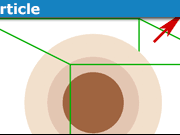
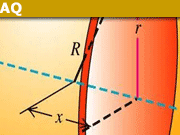



This is highly dependent on your system of units. It is true in your typical SI units, but many unit systems, such as any set of natural units, time and length have the same physical dimension as inverse energy or mass.